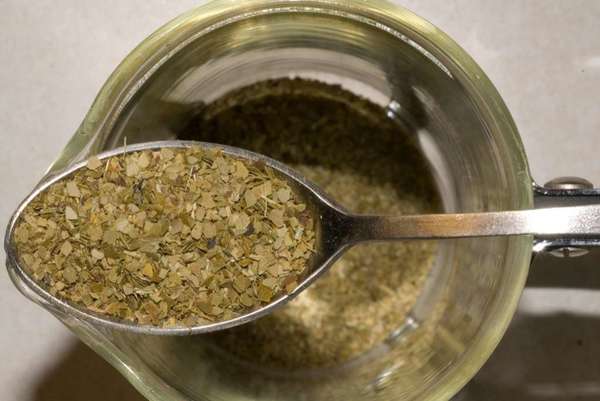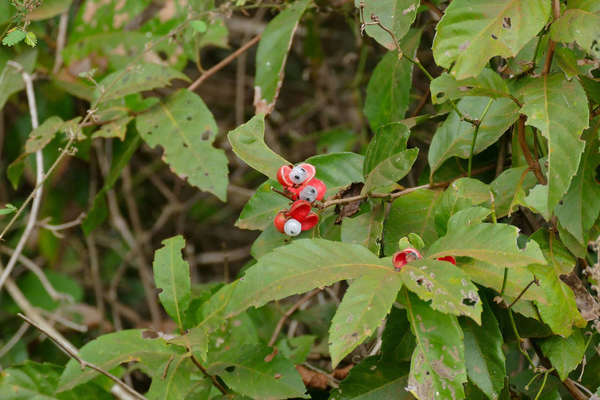Herbal Teas Containing Caffeine
Last Updated: Jun. 5, 2014The terms herbal tea and the synonyms tisane and herbal infusion are very broad terms, as they encompass all beverages made of hot water infusions of any plants other than the tea plant, Camellia sinensis.
Cocoa, cacao, or chocolate
The cocoa plant, Theobroma cacao, contains low amounts of caffeine, and much larger amounts of the related chemical theobromine. Cocoa products are sometimes included in herbal teas. The amount of caffeine in these blends is usually very low to the point of being negligible; however, some caffeine is present, which can be a matter of concern to people with a medical sensitivity to caffeine. Yerba mate is one of three caffeinated species of holly commercially cultivated to make an herbal tea. Photo © oliver.dodd, CC BY 2.0.
Yerba mate is one of three caffeinated species of holly commercially cultivated to make an herbal tea. Photo © oliver.dodd, CC BY 2.0.The caffeinated hollies: yerba mate, guayusa, and yaupon
Yerba maté is the best-known caffeinated plant after tea, coffee, and cocoa/cacao (which just contains traces of caffeine). The scientific name for yerba maté is Ilex paraguariensis, denoting that it is in the Ilex, or holly genus. Although many hollies do not contain caffeine, there are a number of other species of hollies that contain caffeine and that are used to produce herbal teas and other beverages. These include guayusa, Ilex guayusa, and , the only caffeinated plant native to North America, with the unflattering scientific name Ilex vomitoria. The name vomitoria is misleading; An infusion of yaupon leaves does not induce vomiting; this name comes from the belief that yaupon was one of the ingredients in the so-called "black drink", a drink historically consumed by certain Native American tribes, containing many ingredients (sometimes including yaupon) in a ritual which included vomiting.As a word of caution, although while the leaves of many hollies can be used to produce herbal teas which are generally safe to drink, other parts of the plant, such as the fruit, are poisonous. The fresh leaves are also poisonous: the plant must be fully dried before it is safe to consume.
 Guarana Plant (Paullinia cupana), Leaves and Fruit, © Bernard Dupont, CC BY-SA 2.0.
Guarana Plant (Paullinia cupana), Leaves and Fruit, © Bernard Dupont, CC BY-SA 2.0.
